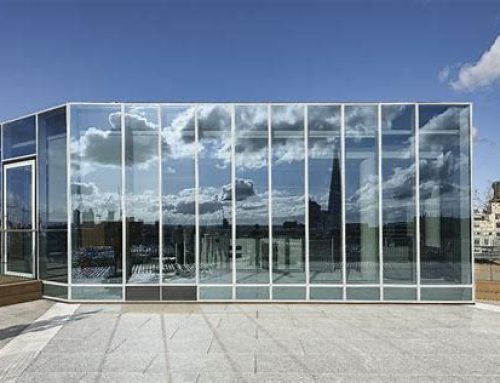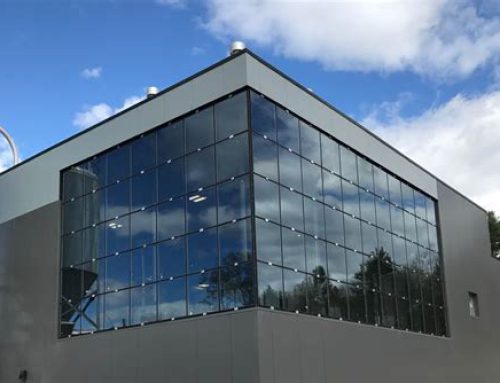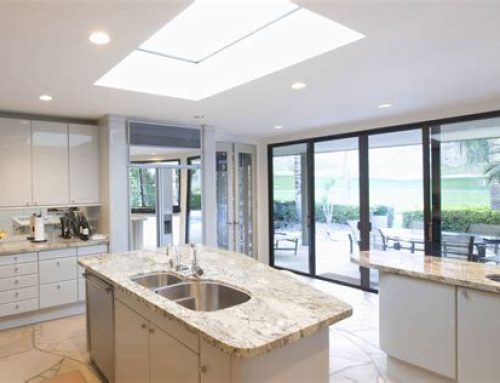Cost of curtain wall per square foot

Cost of curtain wall per square foot ,Curtain walls are architectural marvels, defining the skyline of modern cities with their sleek lines and expansive glass surfaces. These structural systems, predominantly made of aluminum and glass, offer not only aesthetic appeal but also functionality, providing natural light, thermal insulation, and weather protection to buildings. However, the cost of implementing curtain walls can vary significantly depending on several factors. One crucial metric for understanding this cost is the price per square foot.
Understanding Curtain Walls:
Before delving into the costs, it’s essential to comprehend what curtain walls entail. Unlike traditional load-bearing walls, which carry the weight of the building, curtain walls are non-structural, meaning they do not support the building’s floors or roof. Instead, they act as an outer covering, bearing only their weight and transferring wind and other forces to the building’s main structure. This design allows for larger expanses of glass, promoting natural light and panoramic views.
Factors Influencing Cost:
Several factors influence the cost of curtain walls per square foot:
- Materials: Aluminum frames and glass are the primary components of curtain walls. The quality, thickness, and type of glass, as well as the grade of aluminum, significantly impact the cost. For instance, high-performance, energy-efficient glass will cost more than standard options.
- Design Complexity: The intricacy of the curtain wall design affects fabrication and installation costs. Custom shapes, curved glass, or irregular patterns require specialized engineering and manufacturing, adding to the overall expense.
- Size and Height: Larger buildings or structures with significant height necessitate more materials and labor, increasing the overall cost per square foot.
- Location and Site Conditions: Site accessibility, local labor costs, transportation expenses, and environmental factors like seismic considerations or extreme weather conditions can all influence the cost.
- Additional Features: Optional features such as integrated sunshades, thermal breaks, acoustic insulation, or advanced security systems can further drive up the cost.
Average Costs:
While pinpointing an exact cost per square foot for curtain walls is challenging due to the variables mentioned, industry estimates provide some guidance. On average, basic curtain wall systems can range from $75 to $150 per square foot. However, this price can escalate to $200 or more per square foot for high-end designs with premium materials and complex configurations.
Case Study:
For instance, a mid-rise office building requiring a standard curtain wall system with clear, single-pane glass might cost around $100 per square foot. Meanwhile, a luxury hotel featuring a bespoke curtain wall design with double-glazed, low-emissivity glass panels, intricate mullion patterns, and integrated sunshades could surpass $250 per square foot.
Challenges and Considerations:
When planning a project involving curtain walls, it’s essential to consider various challenges and factors beyond the initial cost. These include:
- Energy Efficiency: While curtain walls provide ample natural light, they can also contribute to heat gain or loss if not properly insulated. Investing in high-performance glass and thermal breaks can improve energy efficiency but may entail additional upfront costs.
- Maintenance and Longevity: Regular maintenance is necessary to ensure the longevity and performance of curtain walls, particularly in harsh environments or high-traffic areas. Factor in ongoing maintenance expenses when evaluating the overall cost of ownership.
- Building Codes and Regulations: Compliance with building codes and regulations, including safety standards, fire resistance, and wind load requirements, is paramount. Failure to meet these standards can result in costly revisions or penalties.
- Aesthetics and Brand Image: Curtain walls play a significant role in defining a building’s aesthetic appeal and brand image. Investing in high-quality materials and craftsmanship can enhance the overall perception of the structure and its occupants.
- Project Timeline: The complexity of curtain wall installation can impact project timelines, potentially delaying occupancy or increasing construction costs. Coordination with other trades and meticulous planning are essential to minimize disruptions and ensure timely completion.
Embracing Innovation and Sustainability:
As the construction industry evolves, so do the technologies and materials used in curtain wall systems. Innovations such as dynamic glazing, which adjusts tint levels in response to sunlight, or photovoltaic-integrated glass, which generates renewable energy, showcase the potential for curtain walls to contribute to sustainability goals while enhancing building performance.
Investing in sustainable curtain wall solutions not only reduces environmental impact but also can yield long-term cost savings through improved energy efficiency and reduced operational expenses. Additionally, incorporating recycled materials or adopting modular construction techniques can further enhance sustainability credentials while streamlining installation and minimizing waste.
Collaboration and Expertise:
Successful implementation of curtain walls requires collaboration among architects, engineers, manufacturers, and contractors. Leveraging the expertise of professionals with specialized knowledge in curtain wall design, fabrication, and installation is essential for ensuring project success and mitigating risks.
Early engagement with curtain wall experts during the design phase can help optimize performance, identify cost-saving opportunities, and address potential challenges proactively. Value engineering exercises, where alternative materials or construction methods are evaluated for cost-effectiveness, can also help align project goals with budgetary constraints without compromising quality or aesthetics.
The Future of Curtain Walls:
Looking ahead, the future of curtain walls is ripe with possibilities. Advancements in materials science, digital fabrication, and Building Information Modeling (BIM) are driving innovation in curtain wall design and construction, enabling architects to push the boundaries of creativity and sustainability.
From kinetic facades that respond dynamically to environmental conditions to biomimetic designs inspired by nature, the next generation of curtain walls promises to redefine the built environment in unprecedented ways. By embracing cutting-edge technologies and embracing a holistic approach to design, construction, and operation, curtain walls will continue to shape the skylines of tomorrow’s cities while addressing the challenges of urbanization, climate change, and resource scarcity.
Addressing Challenges and Ensuring Resilience:
Despite the allure of curtain walls, challenges exist in their implementation. External factors such as climate change and extreme weather events underscore the importance of designing resilient curtain wall systems capable of withstanding varying environmental conditions. Robust engineering, rigorous testing, and adherence to industry standards are essential for ensuring the durability and safety of curtain walls over their lifespan.
Additionally, considerations such as acoustic performance and occupant comfort cannot be overlooked. Curtailments in noise pollution and provision of adequate thermal comfort are integral to creating healthy and productive indoor environments. Incorporating soundproofing materials and optimizing thermal insulation can enhance occupant well-being while further contributing to energy efficiency goals.
Inclusive and Accessible Design:
Furthermore, the pursuit of inclusive and accessible design principles is paramount in the development of curtain wall systems. Ensuring barrier-free access for individuals with disabilities and accommodating diverse user needs fosters inclusivity and social equity in the built environment. Features such as tactile indicators, audible signals, and visual contrasts not only enhance usability but also promote universal design principles that benefit all occupants.
Moreover, embracing biophilic design elements in curtain wall aesthetics can foster connections with nature, improve psychological well-being, and enhance overall building performance. Integrating greenery, natural materials, and daylight optimization strategies into curtain wall designs can create welcoming and rejuvenating spaces that enrich the human experience.
Conclusion:
In conclusion, the cost of curtain walls per square foot encapsulates only a fraction of the broader narrative surrounding these architectural elements. Beyond monetary considerations, the value of curtain walls lies in their ability to transcend mere functionality and evoke emotions, inspire creativity, and enrich the built environment.
As we navigate the complexities of designing, constructing, and maintaining curtain walls, let us embrace a holistic approach that prioritizes sustainability, resilience, inclusivity, and innovation. By harnessing the collective expertise of industry professionals, leveraging technological advancements, and embracing a shared vision of creating vibrant, resilient, and equitable urban landscapes, we can unlock the full potential of curtain walls as enduring symbols of human ingenuity and aspiration. Together, let us build a future where curtain walls not only adorn skylines but also elevate our collective consciousness and enrich the fabric of our cities for generations to come, Cost of curtain wall per square foot.





Leave A Comment